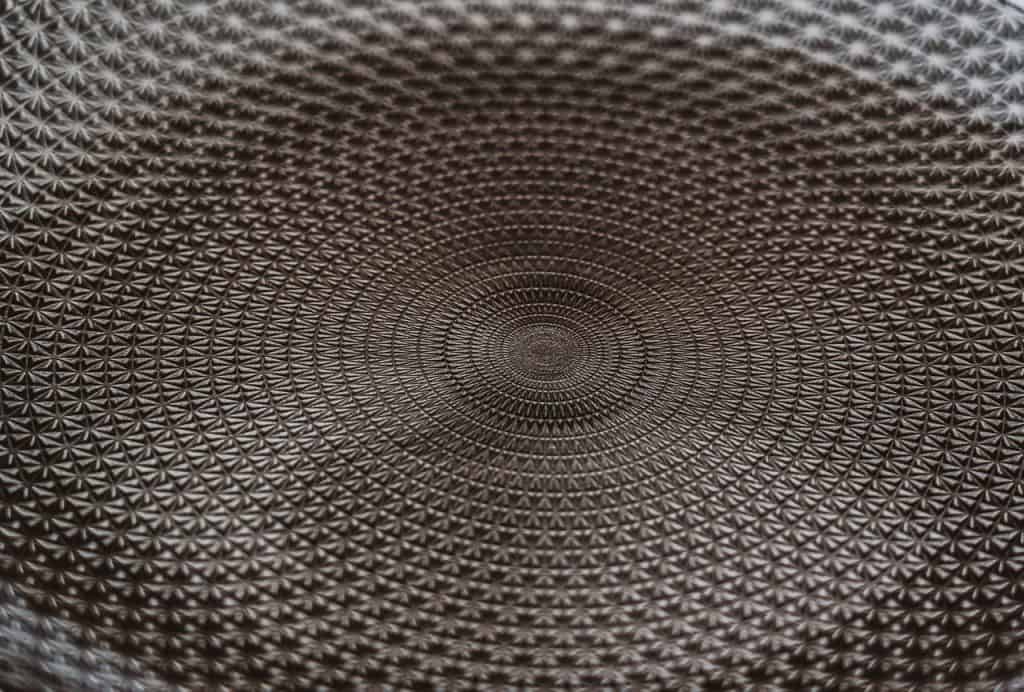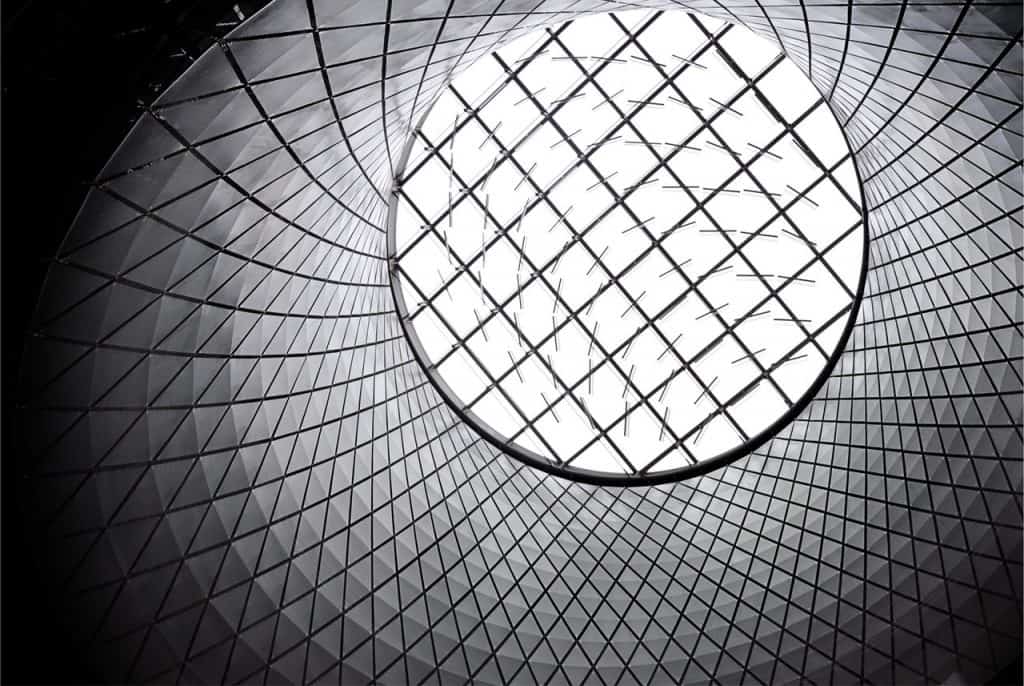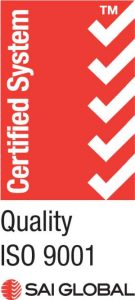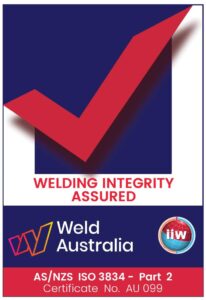Can you explain what aluminium is? A chemical element having the symbol Al and atomic number 13, aluminium. Does aluminium ever rust?
As a result of its reaction with oxygen in the air, a thin layer of aluminium oxide forms that prevents additional chemical reactions from damaging the metal.
Since the aluminium oxide coating prevents further contact between the metal and its surroundings, corrosion is effectively halted.
If you've ever watched metal rust, you know it's a slow and steady process. However, aluminium?
It's not like iron or steel; it won't corrode. That appears too good to be true, but it is supported by research.
Surface aluminium oxide occurs on exposed aluminium alloys after prolonged air exposure.
Under normal conditions, this layer helps stop further rusting. Aluminium is typically used in conjunction with other metals, such as copper, which act as a corrosion barrier.
Take an everyday piece of furniture; wood rots away from exposure to air moisture, steel corrodes with time due to its iron content, while aluminium ages imperceptibly.
Table of Contents
Types of Metal That Are Corrosion Resistant or Don’t Rust
Typically, when we think of rust, we picture the orange-brown flakes that form on an exposed steel surface as a result of iron molecules in the metal reacting with oxygen in the presence of water to make iron oxides.
Acids and strong industrial chemicals can also cause metals to react. Even if the corrosion is stopped, the metal will eventually dissolve because flaky rust will keep peeling off and exposing it to the atmosphere.
In oxidising reactions, not only do metals containing iron corrode or tarnish, but also metals that do not contain iron.
Metals that are "rust-proof" or, more precisely, "corrosion-proof," can be used for handrails, tanks, appliances, roofing, and siding to avoid oxidation and breakdown.
There are four main families of metals that fit under this category:
- Composed of stainless steel
- Metal aluminium
- Metals of the copper, bronze, or brass family
- Steel that has been galvanised
Stainless Steel
It's important to remember that stainless steels like 304 and 316 are alloys, and that most contain iron, which oxidises readily and causes rust.
But many stainless steel alloys also contain a high percentage of chromium – at least 18 percent – which is even more reactive than iron.
Soon after being exposed to air, chromium oxidises to form a thin, hard layer of chromium oxide on the metal's surface.
This oxide layer serves to protect the underlying steel from oxygen and corrosion. The corrosion resistance of this alloy is enhanced by the presence of other elements like nickel and molybdenum.
Aluminum Metal
Aluminum is used in the construction of many aircraft, automobiles, and bicycles. This is because aluminium is both lightweight and resistant to corrosion.
Since aluminium alloys contain so little iron, they cannot rust in the traditional sense, yet they will nevertheless oxidise over time.
Aluminum oxide forms rapidly on the surface of the alloy when it comes into contact with water. The metal underneath is safeguarded by the hard oxide coating, which is extremely resistant to further corrosion.
Copper, Bronze and Brass
Because of their low iron content, the following three metals do not rust, but they do react with oxygen. The green patina that forms on oxidised copper actually prevents further corrosion.
Because it contains tin in addition to copper and a few other elements in trace proportions, bronze has a far higher corrosion resistance than copper does on its own.
The final material is brass, an alloy of copper, zinc, and other elements that also displays excellent corrosion resistance.
Galvanized Steel
Galvanized steel rusts very slowly but rust nonetheless. Galvanized steel is a form of carbon steel that has been coated with a thin layer of zinc.
For corrosion protection, the steel is coated in zinc, which creates a barrier against oxygen and water.
Although the zinc coating can be scratched, the underlying steel is still protected by cathodic protection and a protective covering of zinc oxide.
Zinc, like aluminium, is extremely reactive to oxygen in the presence of moisture, therefore this coating protects the iron in the steel from oxidation.
Does Aluminium Rust?
Aluminum does not rust, yet it does corrode, because rust is a form of corrosion (the wearing away of metal).
This means that despite the common practise of using these phrases interchangeably, they actually mean different things.
To protect itself from further oxidation, aluminium forms an oxide layer when exposed to air.
Aluminium oxide is a protective covering that, unlike rust on iron and steel, is hard, thin, and quite transparent.
Oxidation of aluminium isn't a major issue because it's not easily observable and actually protects the metal.
How To Protect Aluminium From Corrosion
However, corrosion is a major issue. Aluminum is best kept in an airtight container away from sources of moisture to prevent corrosion.
Because corrosion is caused by a chemical reaction between the moisture and the aluminium, this is the case.
When it comes to protecting aluminium from corrosion, you have several options, including using a protective transparent coat or selecting an aluminium alloy known for its resistance to oxidation.
Aluminum Corrosion: Why it Happens and What to Do When It Does
No offence, Mr. Stark, but iron just doesn't cut it when it comes to suits. Not only is it cumbersome and flight-limiting due to rust, but it also corrodes.
Reddish-brown flakes will start to peel off the surface if you stay in moist conditions for too long. Aluminum would be preferable because it is lightweight and resistant to corrosion.
However, aluminium does corrode, especially in the presence of salt water. Here is an analysis of the issue, along with some suggestions for how to address it.

Rust vs Corrosion
Corrosion is the natural state of most metals, as they prefer to return to their ore form. (With the exception of gold, of course.) Oxidation, the joining of metal atoms with oxygen, is the first step in the corrosion process, followed by a slow or rapid disintegration.
In contrast to other forms of corrosion, iron and steel are uniquely susceptible to rusting.
Rust forms when iron oxidises andflakes off. Adding water speeds up the process. The flaking process itself exposes new metal, which then oxidises and flakes.
Due to its high affinity for oxygen, aluminium oxidises far more quickly than steel.
Aluminum oxide, on the other hand, only produces a tough, whitish-colored skin on the surface. The oxidation process terminates once all the aluminium atoms have bonded with oxygen.
Aluminum Corrosion
As soon as this oxide layer is scratched off, the underlying metal is revealed, and the cycle repeats. Except under two circumstances, it will not chew the metal away.
In the first place, the aluminium oxide layer might be damaged by the presence of chlorides or sulphides.
The word "chloride" refers to a group of chemical compounds containing chlorine. Salt, or sodium chloride, is an example of a chemical compound. Where do you get that much salt, by the way? Within the depths of the sea.
For the same reason, sulphides are also compounds containing sulphur. In regions with high levels of air pollution, they thrive.
Second, galvanic corrosion is a possibility under certain conditions. When two metals with different electrical properties are placed into close proximity in a conducting liquid, an electrical effect occurs.
When you submerge aluminium and brass in salt water, for instance, electrons will transfer from the aluminium to the brass.
On boats, this can be an issue if brass fixtures are installed near or in direct touch with aluminium. (Fuel storage tanks are a good illustration.)
Preventing Aluminum Corrosion
Aluminum oxidation is inevitable and difficult to prevent, but it's not a major issue unless it matters to you how it looks.
However, aluminium corrosion may be a major problem. If there's a chance that could occur, you can do one of two things:
- Cover it in something sturdy.
- Reduce or at least slow down the rate of galvanic corrosion.
The series or grade of aluminium you're working with is also an important factor to think about. However, the corrosion-resistance qualities of certain of the theses, especially 5052 and 3003, are superior to those of others.
In general, alloys in the 1xxx, 3xxx, 5xxx, and 6xxx series are resistant to corrosion.
Protective Coatings
There are three options:
- powder coat anodize
To prevent galvanic corrosion, use an electrically resistant paint or powder.
The process of anodising, which involves oxidising the surface, can result in very appealing coatings. On the other hand, larger constructions rarely benefit from this method.
If you decide to go the coating route, keep in mind that any damage will require prompt care. Allowing corrosion to set in is a real possibility if any aluminium is left exposed.
Preventing Galvanic Corrosion
Aluminum is best preserved by avoiding moisture. When no electrically conductive liquid is present between the metals, the galvanic effect will not take place.
If that isn't an option, then utilise coatings that prevent electricity from passing through.
A zinc sacrificial anode is used by many boat owners. A self-sacrificial element, this corrodes at a quicker rate than the aluminium.
It's true that sacrificial anodes should be swapped out on occasion, but so do most coatings.
Building a Better Iron Man Suit
In the film, Tony Stark reveals that he has upgraded his armour to one constructed of a gold-titanium alloy.
Gold is very thick, thus that doesn't make much sense, as the American Chemical Society reminds out.
Instead, they advocate using Nitinol, a nickel-titanium alloy.
If you'd like to use Nitinol in your next fabrication project, you can ask for it, but keep in mind that it could end up costing you a pretty penny.
We think aluminium is a better option, and if corrosion is an issue, you already know how to deal with it.
The Strength of Aluminum
Aluminum often evokes images of utilitarian items like can openers and cookie sheets rather than images of strength and durability in the minds of the general public.
Aluminum is a malleable metal that can be shaped into anything from ultra-thin and lightweight sheets to thick, brittle rods.
The metal aluminium may be used to create some of the world's strongest materials, but this is a little-known fact.
The metal's high value stems from its versatility; it is used in everything from vehicles and construction equipment to military transports.
It's likely that you blindly trust aluminum's protective qualities hundreds of times every day.
Everyday Strength

Aluminum is about a third as heavy as steel, which allows for thicker and stronger components while still decreasing overall vehicle and application weight.
Pound for pound, aluminium may be forged to be as strong as, or even stronger than, some steels.
Aluminum is the second-most used material by manufacturers, so chances are good that your vehicle has a good amount of aluminium in it to help keep you safe on the road.
Aluminum may be worked with ease by engineers, resulting in components that are as functional as (or more so) than their steel counterparts, while still reducing the overall weight of a vehicle.
Aluminium is excellent at dispersing impact energy, keeping passengers safe in the event of an accident.
Automobiles made of aluminium are more agile because of their reduced weight.
The ability to better control the vehicle and stop in a shorter amount of time helps drivers avoid collisions.
Some of the world's tallest skyscrapers, including perhaps the office building in which you are currently located, employ aluminium for window frames and curtain walls.
As an added bonus, this multipurpose metal is utilised to manufacture everything from aeroplanes and trains to buses and trucks, and even ocean liners.
Simply put, the world continually relies on the durability of aluminium, often without even realising it.
Extreme Durability
Aluminum is used for "everyday" items, but its strength and endurance also make it a go-to material for extreme circumstances.
Those who work in design know that high-strength aluminium alloys can withstand some of the most extreme environments on Earth and beyond.
- To defend our troops, the United States Army has relied on aluminium for decades. The Humvee (HMMWV), HEMTT, and Bradley Fighting Vehicle all use the high-strength, crash-absorbent metal to cut down on weight, prevent rust, and remain dependable in harsh environments. Even an aluminium armour plate is employed to withstand bomb blasts and other forms of violence.
- It's no exaggeration to state that without aluminium, modern space travel would be impossible, according to NASA. Used extensively in the space shuttle programme, and the material of choice for the upcoming Orion spacecraft that will one day transport humans to Mars, aluminum-lithium alloy was also selected by NASA.
- U.S. Air Force: High-strength aluminium alloys have been among the most often used materials for making military aircraft, replacing previous aircraft made of wood, steel, wire, and fibre during WWII. The F-16's aluminium airframe is the largest single component of the plane.
- Shark Cages: Aluminium's reliability is put to the test by one of nature's deadliest predators. For shark cages, aluminium is the material of choice because to its buoyancy and resistance to corrosion in saltwater. Furthermore, aluminium bars are more than sufficient to protect divers from direct attacks from Great White and other sharks.
The Secret to Strength
Aluminium's chemistry holds the key to its durability. Extremely strong alloys can be made by combining pure aluminium with other elements.
Silicon, magnesium, and copper are common additions used to boost the strength and formability of aluminium.
Therefore, aluminum-zinc alloys are some of the strongest alloys now available and find widespread application in the automotive and aerospace sectors.
Hot rolling or cold rolling can be used to further strengthen aluminium. Rapid cooling after heat treatment can increase the strength of certain alloys.
During this procedure, the atoms are effectively frozen in place, which results in a more robust metal.
In contrast, the "cold working" of some aluminium — by rolling, stretching, forging, or drawing — results in a stronger material. This procedure reduces atomic motion in relation to one another, increasing the final product's stability.
The 7000-series alloys are the strongest aluminium alloys, with strengths more than 72,000 psi. Such an aluminium wire, measuring 1.2 inches in diameter, could hold up a fully laden tractor-trailer.
Conclusion
The chemical element aluminium (atomic number 13, symbol Al) does not corrode. After being exposed to air for a long time, aluminium alloys develop a protective layer of aluminium oxide on their surface. To prevent corrosion, it is usually combined with copper or another metal. "Rust-proof" or "corrosion-proof" metals can be used for a wide variety of applications, including railings, tanks, appliances, roofing, and siding. Galvanized steel, stainless steel, aluminium, and metals from the copper, bronze, and brass families are the four primary types of metals that fall into this category.
Aluminum's low weight and high corrosion resistance have made it a popular material for the manufacture of aeroplanes, cars, and bikes. Even though rust is a type of corrosion, this material does not rust. Aluminum forms an oxide layer when exposed to air; this layer is hard, thin, and transparent and serves as a protective barrier against further oxidation. The underlying steel is shielded from oxygen and corrosion by this oxide layer. Galvanized steel rusts slowly but rusts nonetheless, whereas copper, bronze, and brass offer excellent corrosion resistance.
Aluminum needs to be stored in an airtight container away from moisture if it is to avoid corrosion. Aluminum A protective transparent coat or choosing an aluminium alloy known for its resistance to oxidation can prevent corrosion, which is caused by a chemical reaction between the moisture and the aluminium. Metals in general oxidise to rust over time, but iron's unusually strong affinity for oxygen makes it especially vulnerable to the process. Alternatively, aluminium oxide only results in a hard, white skin on the surface, and the oxidation process stops once all the aluminium atoms have bonded with oxygen. However, chlorides and sulphides, which thrive in areas with high levels of air pollution, may damage the aluminium oxide layer.
Aluminum oxidation is difficult to prevent and occurs naturally over time, but it is not a major problem unless aesthetics are a priority. It's important to protect it with a thick layer of something sturdy to stop or slow down the rate of galvanic corrosion. Powder coat anodize, zinc sacrificial anodes, and Nitinol (a nickel-titanium alloy) are all examples of protective coatings. Prevent electricity from passing through by sealing off any potential points of moisture entry. Aluminum's malleability allows it to take on a wide variety of forms, from ultrathin and lightweight sheets to thick, brittle rods.
Vehicles, construction machinery, and even military transports all make use of this second-most-popular material. It can be forged to be as strong as (or even stronger than) some steels and is about a third as heavy as steel. Aluminum's low density and high strength-to-weight ratio make it an ideal material for vehicle construction, as it keeps passengers safe in the event of an accident and gives drivers more control over the vehicle. It's also in aeroplanes, trains, buses, trucks, and ocean liners, not to mention window frames and curtain walls. Its high durability makes it a good choice even in the most demanding situations.
Aluminum's light weight, resistance to corrosion, and dependability in extreme conditions make it an essential material for the US military and other applications like Shark Cages. Both the Space Shuttle programme and the Orion spacecraft employ it. Pure aluminium can be combined with other elements like silicon, magnesium, and copper to produce alloys with improved durability thanks to aluminium's unique chemical composition. Aluminium can be strengthened further through hot or cold rolling, with the strongest alloys being those in the 7000 series (with strengths of over 72,000 psi).
Content Summary
- Metals that are "rust-proof" or, more precisely, "corrosion-proof," can be used for handrails, tanks, appliances, roofing, and siding to avoid oxidation and breakdown.
- Aluminium oxide is a protective covering that, unlike rust on iron and steel, is hard, thin, and quite transparent.
- When it comes to protecting aluminium from corrosion, you have several options, including using a protective transparent coat or selecting an aluminium alloy known for its resistance to oxidation.
- However, aluminium does corrode, especially in the presence of salt water.
- Here is an analysis of the issue, along with some suggestions for how to address it.
- In contrast to other forms of corrosion, iron and steel are uniquely susceptible to rusting.
- However, aluminium corrosion may be a major problem.
- Reduce or at least slow down the rate of galvanic corrosion.
- The metal aluminium may be used to create some of the world's strongest materials, but this is a little-known fact.
- The metal's high value stems from its versatility; it is used in everything from vehicles and construction equipment to military transports.
- Aluminum is the second-most used material by manufacturers, so chances are good that your vehicle has a good amount of aluminium in it to help keep you safe on the road.
- Aluminum is used for "everyday" items, but its strength and endurance also make it a go-to material for extreme circumstances.
- Those who work in design know that high-strength aluminium alloys can withstand some of the most extreme environments on Earth and beyond.
- Used extensively in the space shuttle programme, and the material of choice for the upcoming Orion spacecraft that will one day transport humans to Mars, aluminum-lithium alloy was also selected by NASA.
- High-strength aluminium alloys have been among the most often used materials for making military aircraft, replacing previous aircraft made of wood, steel, wire, and fibre during WWII.
Frequently Asked Questions
Painting, anodizing or any surface treatment that forms a coating on the aluminium surface will protect the surface from pitting attack. In applications when you want to preserve the aluminium look and still have a surface resistant to pitting, a clear coat or thin anodic coating would be suitable surface treatments.
Like rust, corrosion eats away at the respective metal. This isn't a fast process. Rather, it can take weeks, months, or even years for an aluminum product to corrode. Given enough time, however, aluminum products can develop large holes caused by corrosion.
Aluminium is extremely corrosion-resistant in very pure water. However, aluminium is very sensitive to galvanic corrosion when coupled with other, nobler, metals such as copper, lead, nickel and tin. ... Aluminium can be used successfully in applications using clean seawater providing the right grade is used.
Aluminum is rust-resistant, meaning it doesn't degrade due to oxidation caused by iron and oxygen. Rust only occurs in iron and other metals that contain iron. Steel, for example, is susceptible to rust because it contains iron.
Aluminum corrosion can occur gradually over weeks, months, or even years. With enough time, aluminum products can develop large holes due to corrosion.

